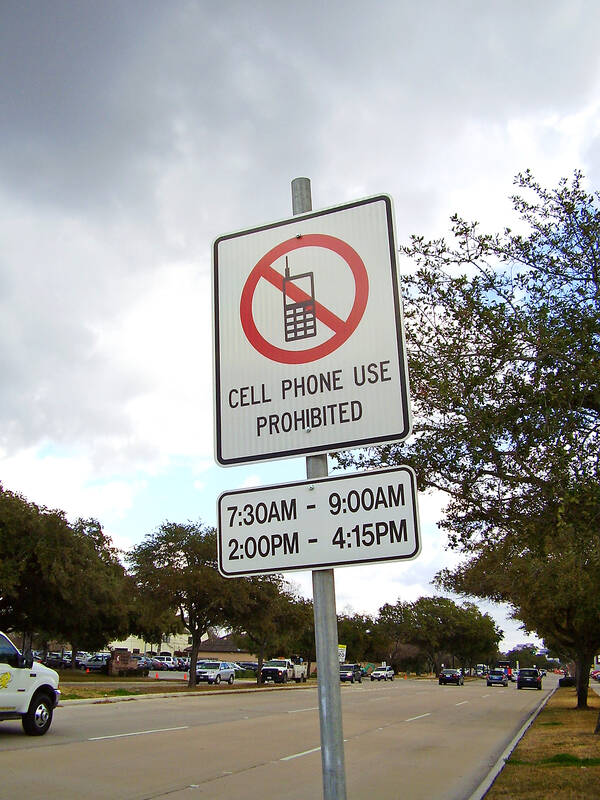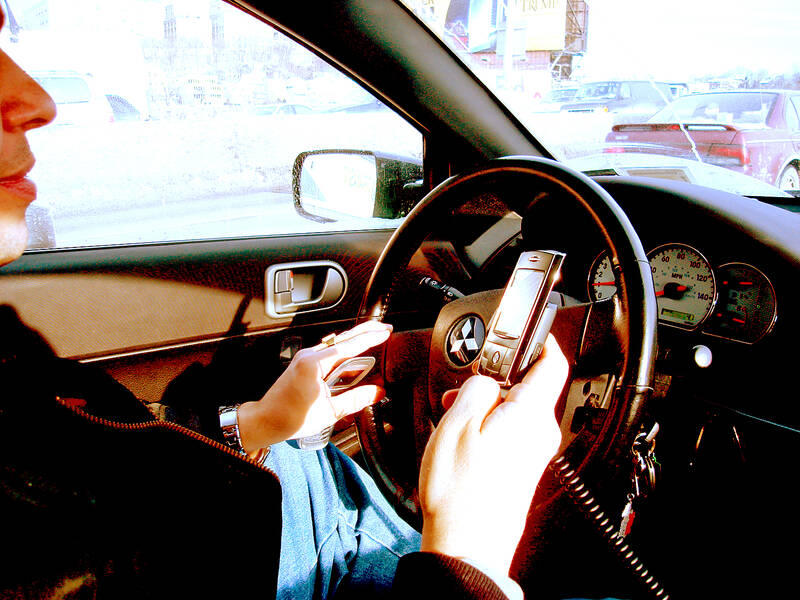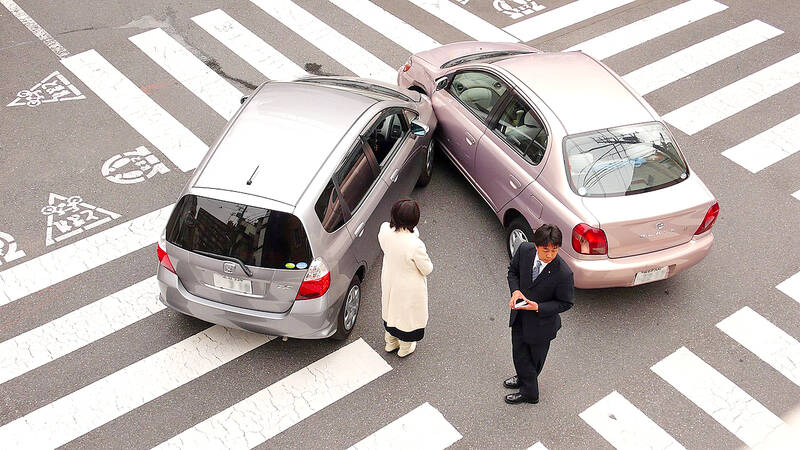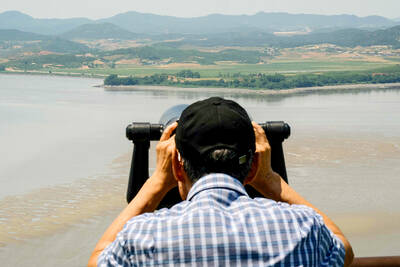The photograph didn’t lie. There I was in the driver’s seat of my car, stopping at the lights, with one hand on the wheel, the other on my lap and holding my mobile phone.
There was nothing to mitigate in my favor. Not the phone addiction we all have. Not my urgent impulse to check who was calling even though I didn’t intend to answer. I was good for it, your honor. I copped the five demerit points that put me perilously close to a three-month licence suspension. I’m now a much more prudent driver (not that I felt I was ever particularly reckless, though I would argue that of course) — slower, more cautious entering intersections and careful never to go near my phone.
Given the terrible annual road toll and its dreadful human carnage in many countries, the need for strict rules and punishments is irrefutable. The momentary lapse of concentration can be lethal.

Photo courtesy of Wikimedia Commons
Mobile phones are, indeed, a danger to everyone on the roads. But I’ve been struck recently (especially since losing those five demerits) by just how many other potentially lethal driver distractions there are.
I live very close to a busy arterial thoroughfare. The streets of my suburb turn into crawling, aggro-filled rat-runs every morning as drivers use the side streets to avoid the lights on this thoroughfare and shave a few minutes off the commute. I see every sort of appalling driver behavior daily. Pedestrians — dog-walkers, kids and old people among them — abused and nearly run over. Every morning my streets host frightening episodes of road rage and shouted threats of violence, as drivers hoon the wrong way up and down lanes and streets to get to the lights and turn first.
And then there are the dangers posed by so many other distractions that drivers subject themselves — and everyone else — to.

Photo courtesy of Wikimedia Commons
Twice recently as I’ve walked with my dogs I’ve seen the same person (silver BMW) reading the same novel, perched over the steering wheel, while slowing down ahead of the red light and waiting for it to turn green. Given that in-real-life death is for a very, very long time indeed, this particular popular Australian novel is not worth dying for. Then again, it’s not entirely worth living for either, in a kind of life-is-far-too-short way, if you know what I mean.
What about the woman (green Range Rover) doing her makeup? I don’t mean while stopped at the lights. No, I’m talking about doing it while crawling along said major thoroughfare. And when I say doing her makeup, I don’t mean touching up her lipstick. I’m talking foundation and eyeliner on the dash. This is her daily routine.
Then there are those people, telephones attached to holders on the dash, who are clearly watching cat videos or Antiques Roadshow or Midsomer Murders (again, remember how short life is and then spare another thought about truly dumb ways to die).

Photo courtesy of Wikimedia Commons
I’ve always had the horrors at seeing dogs tethered on the back of a pickup truck. Once on a Victorian highway a long time ago I saw a dog, tethered with too much leash and distracted by another animal in an adjacent car, jump from the back and ... you can imagine the rest. The sight is with me still. The driver careened off the highway on to the verge, narrowly missing another car, when he realized what was happening to his unfortunate animal.
Dogs in cars (particularly in the front seat) can be massively distracting. Especially if, like one of my local rat-run drivers, you are brushing the canine while it sits on your lap. While you are driving a moving vehicle.
Doing one’s hair (combing/brushing) in the rear-view is an oldie, of course, and as potentially hazardous, it would seem, as the huntsman spider that falls on to your lap when you pull down the sun visor. So, too, making a Windsor knot in your tie while negotiating a right-hand turn.
Then there is eating and drinking. The piece of Vegemite toast in the same hand as the wheel and sips of steaming coffee at the red light may be perilous enough. But what about the guy (white Tesla) eating some sort of cereal? From a cup held in one hand? With a spoon in the other? And, therefore, no hands on the wheel.
The Australian national road toll is no joke. Road accidents cause untold misery and catastrophic death rates. I’ve rightly been put on notice for the phone use. And since then I’ve really come to notice how many other dangerous distractions there are, just how dangerous it is out there — and how blase so many drivers are.

Not long into Mistress Dispeller, a quietly jaw-dropping new documentary from director Elizabeth Lo, the film’s eponymous character lays out her thesis for ridding marriages of troublesome extra lovers. “When someone becomes a mistress,” she says, “it’s because they feel they don’t deserve complete love. She’s the one who needs our help the most.” Wang Zhenxi, a mistress dispeller based in north-central China’s Henan province, is one of a growing number of self-styled professionals who earn a living by intervening in people’s marriages — to “dispel” them of intruders. “I was looking for a love story set in China,” says Lo,

It was on his honeymoon in Kuala Lumpur, looking out of his hotel window at the silvery points of the world’s tallest twin skyscrapers, that Frank decided it was time to become taller. He had recently confessed to his new wife how much his height had bothered him since he was a teenager. As a man dedicated to self-improvement, Frank wanted to take action. He picked up the phone, called a clinic in Turkey that specializes in leg lengthening surgery — and made a booking. “I had a lot of second thoughts — at the end of the day, someone’s going

In the next few months tough decisions will need to be made by the Taiwan People’s Party (TPP) and their pan-blue allies in the Chinese Nationalist Party (KMT). It will reveal just how real their alliance is with actual power at stake. Party founder Ko Wen-je (柯文哲) faced these tough questions, which we explored in part one of this series, “Ko Wen-je, the KMT’s prickly ally,” (Aug. 16, page 12). Ko was open to cooperation, but on his terms. He openly fretted about being “swallowed up” by the KMT, and was keenly aware of the experience of the People’s First Party

Standing on top of a small mountain, Kim Seung-ho gazes out over an expanse of paddy fields glowing in their autumn gold, the ripening grains swaying gently in the wind. In the distance, North Korea stretches beyond the horizon. “It’s so peaceful,” says the director of the DMZ Ecology Research Institute. “Over there, it used to be an artillery range, but since they stopped firing, the nature has become so beautiful.” The land before him is the demilitarized zone, or DMZ, a strip of land that runs across the Korean peninsula, dividing North and South Korea roughly along the 38th parallel north. This